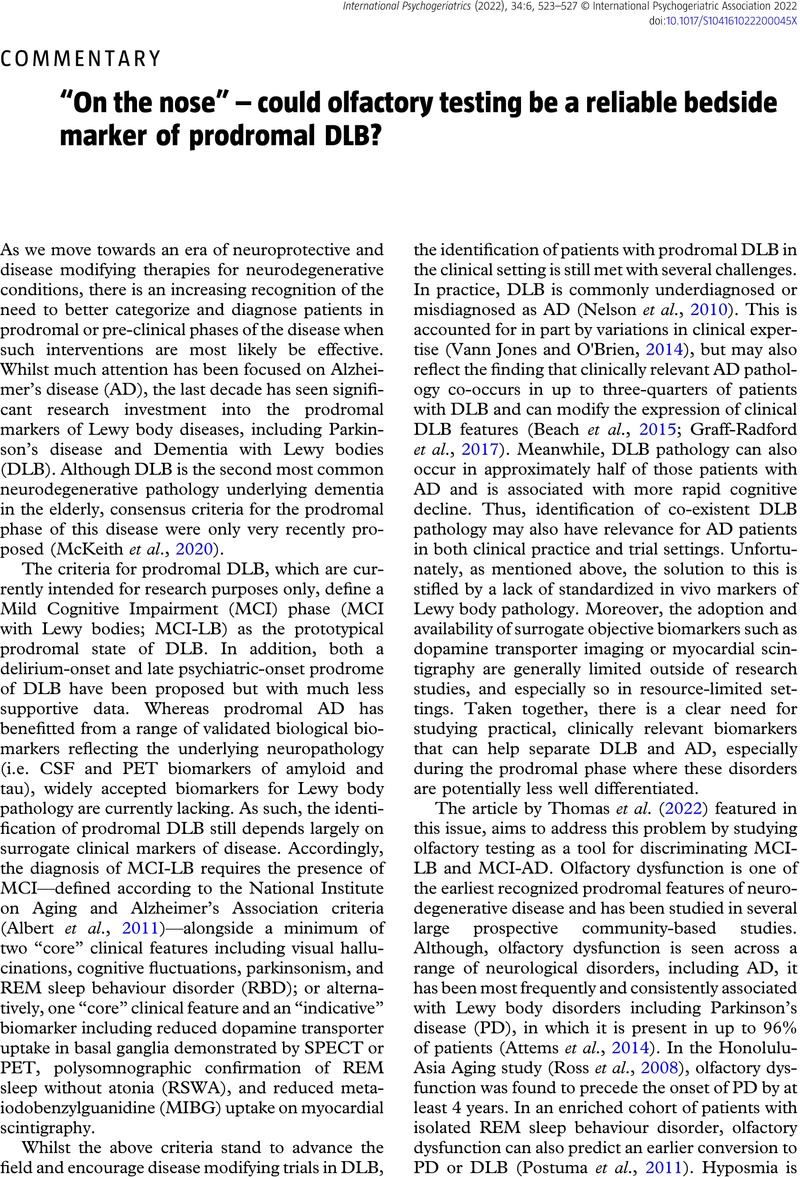Doty, R. L.,
Shaman, P. and
Dann, M. (
1984). Development of the University of Pennsylvania smell identification test: a standardized microencapsulated test of olfactory function.
Physiology & Behavior,
32,
489–
502.
10.1016/0031-9384(84)90269-5CrossRefGoogle Scholar 